Massachusetts Home Inspections YOUR INVESTMENT IS MY CONCERN

Carpenter Bees
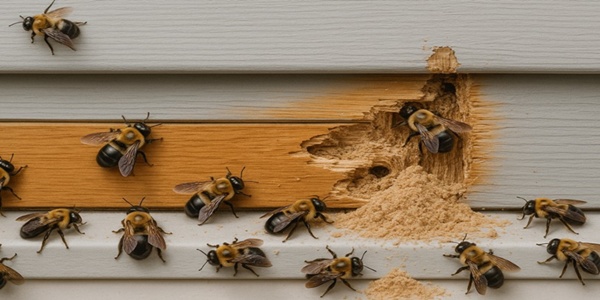
Carpenter bees in Massachusetts are large, black, and yellow, often mistaken for bumblebees due to their similar size and coloration. However, they can be distinguished by their shiny black abdomen, whereas bumblebees have fuzzy yellow hairs covering their abdomen.
These bees are commonly seen in the spring, hovering around the eaves of houses or beneath decks and porch railings. They derive their name from their habit of excavating tunnels in wood using their strong jaws. Unlike termites, carpenter bees—like their distant relatives, carpenter ants—do not consume wood for food. Instead, they burrow into wooden surfaces solely for nesting and breeding. The wood particles they remove are either discarded near the entry hole or repurposed to create partitions within their tunnels.
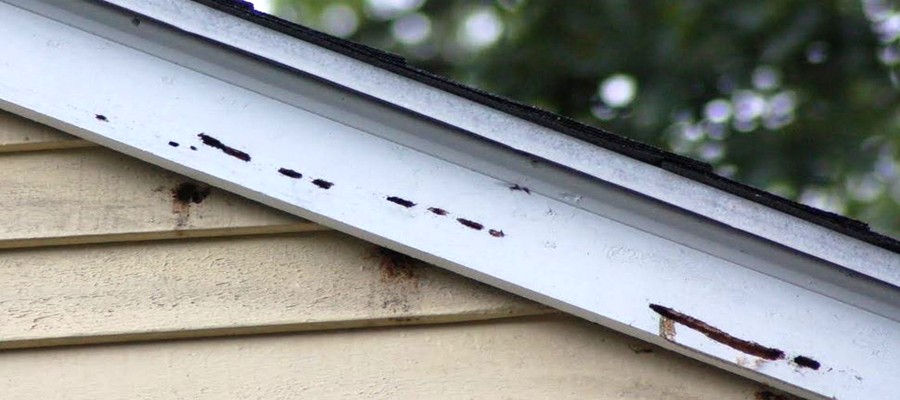
Carpenter bees can become a nuisance outdoors when they hover erratically around people, often causing fear. While male carpenter bees cannot sting as they lack stingers, female carpenter bees can sting if provoked. However, they are generally docile and unlikely to sting unless directly threatened. You can distinguish males from females by their facial markings — males have a distinctive patch of white cuticle on their face, while females have entirely black faces.
Homeowners often complain not only about the intimidating presence of these bees but also about the round holes they bore into wood trim near eaves, gables, fascia boards, porch ceilings, outdoor wooden furniture, decks, wood siding, and window frames. Although initial damage may be minor, carpenter bees may expand old tunnels and create new ones over time, leading to significant structural damage. Additionally, the yellow, coarse sawdust from their excavations, often mixed with their waste, can leave unsightly stains beneath entry holes.
Carpenter bees create nearly perfect circular entry holes measuring 3/8 to 1/2 inch in diameter (see images below). After boring a short entrance tunnel, the female turns at a 90-degree angle and excavates a channel that can range from 6 inches to as long as 4 feet. This main corridor serves as the foundation for smaller chambers, a few inches deep, where she deposits her eggs. Each chamber contains a single egg, along with a mass of pollen to nourish the larvae upon hatching. After sealing the chamber, she repeats this process for each egg, ensuring the next generation's development.
CARPENTER BEE INFESTATION IMAGES
This is a real carpenter bee infestation I encountered on my own property. I'll share some close-up images to give you a clear view of how these bees establish their nests for breeding.
1) After discovering the carpenter bee damage, I carefully removed the outer surface of the wood trim to get a closer look inside the small breeding chambers. The newly hatched bees are clearly visible within their chambers.
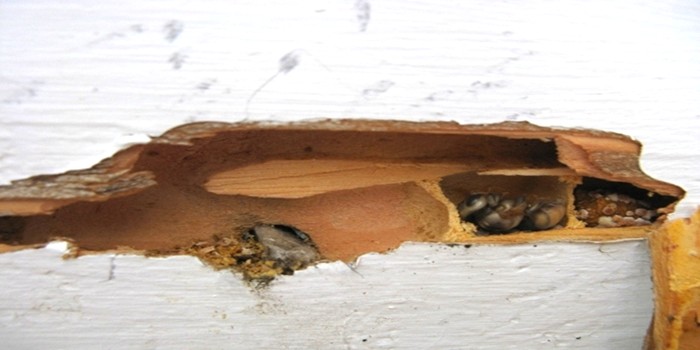
2) Following the bored tunnel, I carefully removed additional layers of wood and discovered two more chambers, each containing newly hatched bees.
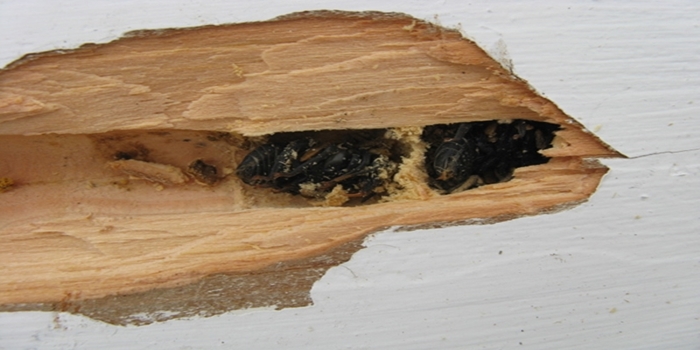
3) As I continue tracing the long bored tunnel, I come across another bee lying on its back.
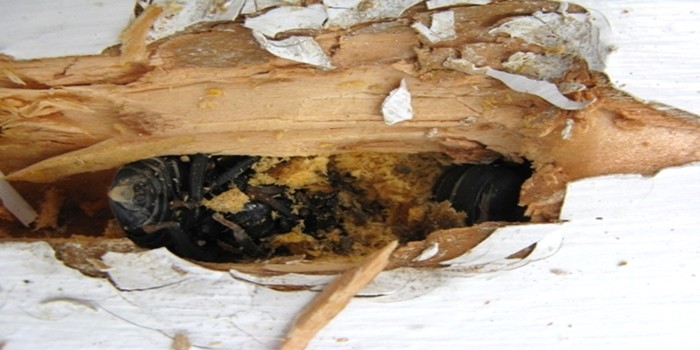
4) Here is the full tunnel with the wood covering removed. This tunnel measured approximately 9 to 10 inches in length.

CARPENTER BEE PREVENTION
Preventing carpenter bee damage is challenging (or nearly impossible) for several reasons. Protective insecticide sprays applied to wood surfaces are only effective for a short time, even when reapplied every few weeks. Since carpenter bees don’t consume the wood, and their activity spans several weeks, they are rarely exposed to lethal doses of pesticide. Additionally, because almost any exposed wood on a house can be targeted by these bees, applying pesticides to all potential sites is often impractical, unsafe, and ineffective. Attempting to spray hovering bees is also not a sensible or safe use of pesticides. Swatting them can often be just as effective.
To minimize the risk of infestation, consider using hardwoods that carpenter bees are less likely to target for nesting. On all buildings, fill any cracks or depressions in wood surfaces to make them less attractive. Regularly paint or varnish exposed surfaces to reduce weathering. If you find unoccupied holes, fill them with steel wool and caulk to prevent reuse, but wait until the bees have emerged before sealing the tunnels. Once filled, repaint or re-varnish the repaired areas. Protect rough spots, like the ends of timbers, with wire screening or metal flashing.
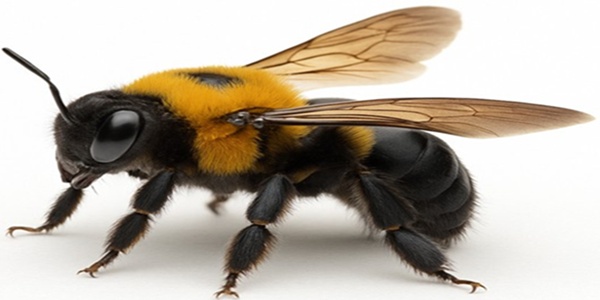
Here is what my clients have to say about my home inspection services:
Press F5 (on your keyboard) for additional testimonials
Hi Dave,
I am writing to let you know how my home inspection went today in Tyngsboro. The inspection went well and we look forward in moving forward in purchasing our new home. What I am really writing about is to tell you how pleased I was with your work. You were very thorough and took your time on the inspection. As first time home buyers, you took some extra time to explain things that you didn't have to and it really was invaluable!
I have several friends and family members that are also getting ready to purchase homes, and I look forward to sharing my experience with your company with them. I will certainly be recommending Massachusetts Home Inspections and will speak highly of you and also share how pleased I was with the output of the inspection.
Best regards,
Crystal F.














